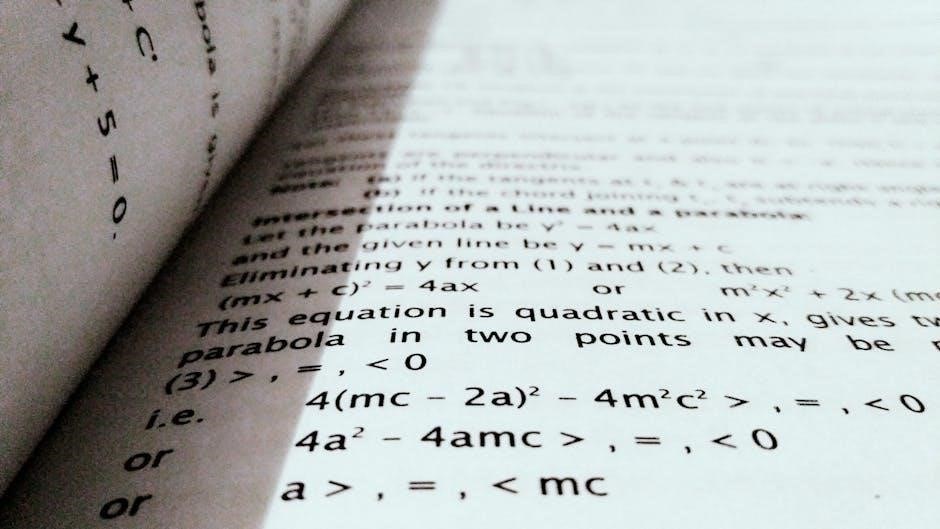The Folger Shakespeare Library is the world’s largest Shakespeare collection, offering unparalleled resources for scholars and enthusiasts. It provides free access to digital texts, including a Romeo and Juliet PDF, featuring annotations and historical context for deeper understanding.
1.1 Role of the Folger Editions
The Folger Editions play a pivotal role in providing authoritative and accessible versions of Shakespeare’s works, including Romeo and Juliet. These editions are meticulously edited to ensure textual accuracy, drawing from the original sources and incorporating scholarly expertise. The Folger Editions are designed to balance historical fidelity with modern readability, making Shakespeare’s plays accessible to both students and scholars. They include explanatory notes, scene-by-scene summaries, and illustrations to enhance understanding. The Romeo and Juliet Folger Edition, edited by Barbara Mowat and Paul Werstine, is particularly renowned for its clarity and thorough commentary. These editions are widely used in classrooms and research, serving as a trusted resource for exploring Shakespeare’s works. The Folger Editions also emphasize the importance of Shakespeare’s cultural and historical context, making them invaluable for deeper analysis. Their availability in digital formats, such as PDF, further extends their reach, ensuring that Shakespeare’s timeless stories remain accessible to a global audience.

Publication History of Romeo and Juliet
Romeo and Juliet was first printed in 1597 (Q1) as a quarto with significant differences in later editions. The 1599 quarto (Q2) offered a more complete text, while the 1609 edition (Q3) further refined the play. The Folger Editions draw from these early sources.
2.1 Early Editions and Textual Differences
The first printed edition of Romeo and Juliet, known as Q1, appeared in 1597 and was significantly shorter than later versions. It included a radically different wedding scene and varied language in the final acts. The 1599 quarto (Q2) provided a more complete text, likely sourced from a different manuscript than Q1. This version became the basis for subsequent editions. In 1609, Q3 was published, further refining the play and naming the King’s Men as the acting company. These early editions reveal textual inconsistencies, with Q1 lacking some scenes present in Q2 and Q3. The Folger Editions synthesize these versions, offering a comprehensive and annotated text that reflects the play’s evolution. By examining these early prints, scholars gain insight into the play’s development and the challenges of reconstructing Shakespeare’s original intent.

Features of the Folger Romeo and Juliet PDF

The Folger Romeo and Juliet PDF offers a meticulously edited text with annotations, modernized spelling, and line numbers for easy reference. It includes explanatory notes, illustrations, and historical context, making it a valuable resource for both students and scholars. The format is suitable for e-readers and printing.
3.1 Digital Formats and Annotations
The text is meticulously annotated with explanatory notes, providing historical context, clarifying archaic language, and explaining complex themes. These annotations enhance readability and deepen understanding for both students and scholars. Additionally, the PDF includes line numbers, which facilitate easy reference to specific scenes or quotes.
The Folger edition also features modernized spelling and punctuation, making Shakespeare’s language more accessible to contemporary readers. The inclusion of scene-by-scene summaries and character analyses further enriches the learning experience. This digital format ensures that the timeless tale of Romeo and Juliet remains accessible and engaging for modern audiences. The annotations and additional resources make it a valuable tool for studying Shakespeare’s work. The Folger Romeo and Juliet PDF is a comprehensive and user-friendly resource for exploring this classic tragedy.

Plot and Characters
Romeo and Juliet tells the tragic story of two young lovers from feuding families, the Montagues and Capulets. The play explores themes of love, hate, and fate, with key characters like Friar Lawrence and Tybalt driving the plot’s emotional and violent conflicts.

4.1 Main Characters in Romeo and Juliet
The tragic tale of Romeo and Juliet revolves around its iconic characters, each playing a pivotal role in the play’s emotional depth and conflict. Romeo Montague, a passionate and impulsive young man, falls deeply in love with Juliet Capulet, the beautiful and determined daughter of his family’s sworn enemies. Their love is forbidden, setting the stage for tragedy. Friar Lawrence, a wise and well-intentioned Franciscan friar, attempts to unite the lovers through secret marriage, while Tybalt, Juliet’s fiery cousin, seeks to destroy Romeo. Mercutio, Romeo’s loyal and witty friend, adds humor but ultimately dies in a duel with Tybalt, escalating the violence. Paris, Juliet’s arranged suitor, represents the societal expectations she defies. The authoritative figures of Lord and Lady Capulet and Lord and Lady Montague perpetuate the feud, while Juliet’s Nurse provides comic relief and maternal affection. Together, these characters weave a tale of love, hatred, and fate, making Romeo and Juliet a timeless masterpiece.
Themes and Analysis

At the heart of Romeo and Juliet lies a rich tapestry of themes that explore human nature, societal conflict, and the inevitability of fate. The play delves into the transformative power of love, juxtaposing it with the destructive forces of hatred and revenge. The feud between the Montagues and Capulets serves as a backdrop to highlight the senselessness of prolonged animosity and its devastating consequences. Love versus hate emerges as a central theme, with Romeo and Juliet’s passion symbolizing hope and unity in a world torn apart by discord.
Another significant theme is fate and fortune, as the characters repeatedly acknowledge the influence of cosmic forces beyond their control. Romeo’s belief in destiny, for instance, propels him toward his tragic end, underscoring the idea that individual actions are often overshadowed by larger, inevitable outcomes.
The play also critiques societal expectations and impulsive behavior, as the characters’ hasty decisions—such as secret marriages, duels, and rash plans—escalate the conflict. Friar Lawrence’s well-meaning but flawed interventions further illustrate how even noble intentions can lead to tragedy.
Finally, the struggle between youth and authority is a recurring motif, with Romeo, Juliet, and their confidants challenging the rigid structures imposed by their elders. The Folger edition’s annotations and commentary provide deeper insights into these themes, enriching the reader’s understanding of Shakespeare’s timeless exploration of human emotion and conflict.

Adaptations and Performances

The Folger Theatre has consistently reimagined Romeo and Juliet in innovative ways, blending traditional elements with modern interpretations. Recent productions have explored themes of love, politics, and societal polarization, resonating deeply with contemporary audiences. For instance, the 2013/14 season featured a production that highlighted the timelessness of Shakespeare’s tale, while the 2024-2025 season opened with a modern, electrifying rendition set against a backdrop of political tension. These adaptations emphasize the play’s universal appeal and its ability to address pressing societal issues.
The Folger Theatre’s productions often incorporate dynamic staging and cutting-edge technology to bring the story to life. Directors like Raymond O. Caldwell have infused the play with fresh perspectives, such as youth-centric themes and explorations of democracy. These adaptations not only honor Shakespeare’s original work but also make it accessible to new generations. The Folger’s commitment to innovative performances ensures that Romeo and Juliet remains a vital and evolving work of art.
